As with any motorcycle, tire condition will greatly affect your safety and your bike’s performance, so replacing your tires regularly is not only important but essential for your safety.
But, how do you know when your motorcycle tires are worn? You should develop the habit of doing monthly inspects to determine the tires wear indicators, tread wear, tire age, and tire condition to determine if your motorcycle tires need replacing.
We are going to hit this one on the head straight away. If your tires are showing wires stop riding immediately, your tire will not perform adequately and is in danger of blowing out.
Sometimes simply looking at the tread down the centre of the tire will immediately tell you that the tires are ready to be replaced. Visible metal cords or threads showing through the tread is the most obvious sign that it’s time to replace them.
If you can see small curvy lines that look a bit like wrinkles running down the center portion of the tire, this is a sign that the cord is just below the surface. This is another indicator that it’s time to replace the tires.
Often a tire will have most of its wear down the center, especially if the majority of your riding is commuting, or freeway riding.
If you see any metal mesh showing, that’s a clear sign that your tires are toast. While that’s pretty obvious, there are other more subtle signs to look for on the tread. Sometime the tires doesn’t show wear right at the wear indicators, but the tread is worn all the way down to the metal weave underneath. This is the easiest visual indicator that your tires are finished.
All new tires will be designed with some type of wear indicator, a small bar of tread that is raised slightly higher than the tire’s lowest point. When the tread has worn down even with this bar, the tire is ready to be replaced.
If you are finding it hard to locate your wear indicator lookout for little bumps at the bottom of the main grooves. If the depth of the rubber remaining reduces below the level of these indicators (1.5mm), the tire has reached its legal wear limit and must be replaced.
Often you can get a few more miles, maybe a couple hundred, after this point, but keep in mind that as the tire is coming to the end of its life, and will need to be changed fairly quickly.
When it comes to your motorcycle tires age it is important that you are abiding to the manufacturer’s recommendations. Even if you left your tires off your bike, sitting in the garage the material of the tires is still breaking down. That is why you should never exceed the maximum manufacturer’s tire age recommendations.
The average motorcycle tires last for 5 to 10 years, but according to most manufacturers, riders should expect their tires to last until the 6th year of frequent use. Of course, environmental factors, usage, build quality, type of rubber, and usage vs the intended purpose of the tire all play a factor in the aging process of a tire.
Of course, environmental factors, usage, build quality, type of rubber, and usage vs the intended purpose of the tire all play a factor in the aging process of a tire.
To locate the manufactures date code (such as in the photo below) have a lllook for a 4 digit part of the DOT code on the sidewall of your motorcycle tire.
The first 2 numbers indicate the week and the last 2 numbers indicate the year (following 2000). So in the example below, the manufacture recommends that you do not use this tire beyond the 35th week of 2007.
source: pitstoparabia.comPut simply dry rot is characterized by cracks in the tire rubber, usually seen on the sidewall. All dry rot really is is the decay of your tire through regularly exposed to harmful substances and conditions.
Dry rot is extremely harmful to your motorcycle and your overall motorcycle safety. Dry rot allows air to escape the tire, if you notice that it is impossible to fully inflate your tire, it might be dry rot!
Dry rot will also express itself as unnatural rubber expansion while driving.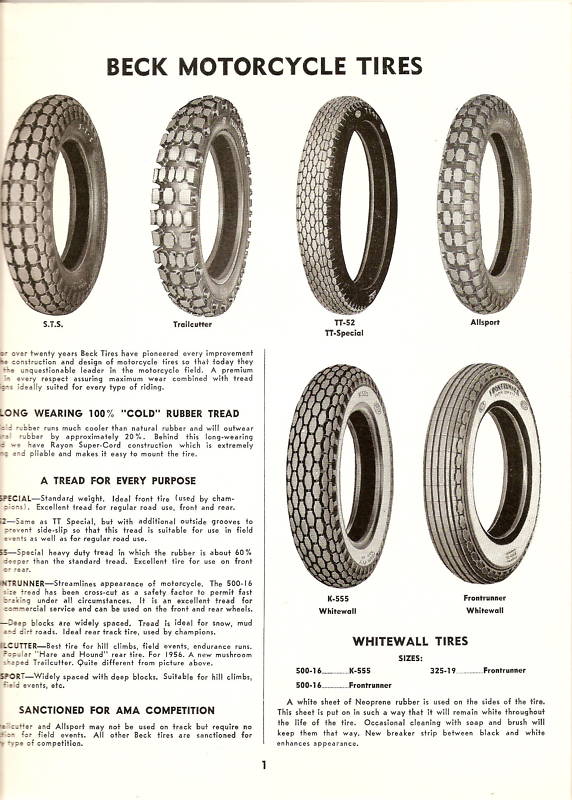 Tires with dry rot are known to develop leaks, holes and blowouts. This can cause mid-ride separation of tread and tire making it extremely dangerous.
Tires with dry rot are known to develop leaks, holes and blowouts. This can cause mid-ride separation of tread and tire making it extremely dangerous.
With motorcycle deaths, 28 times more likely than other fatal crashes (Source: Forbes) dry rot is just not worth brushing over.
It is important to say that there is no way of repairing cracks or dry rot on a motorcycle tire. My recommendation is to check for dry rot twice a year or so and if you find some on your tires get them changed immediately.
Tire damage by cuts and tears are actually the most unlikely causes of needing to replace your tires, however, it does need to be mentioned. The most common things that can cause tire damage is over and under-inflation of your tires. By over or under inflating your tires you’re exposing them to an increased risk of being damaged by sharp objects.
Tire cupping is an odd and uneven wear pattern on your tires due to bouncing motion on your wheels. Tire cupping is often irregular in where it shows up on the wheel and will interfere with the tires ability to have proper contact with the road. Tire cupping will normally appear on one side of the tire only. Some slight cupping over time is normal and is due to low tire pressure. The best thing you can do is increase the tire pressure by about 2psi.
Tire cupping is often irregular in where it shows up on the wheel and will interfere with the tires ability to have proper contact with the road. Tire cupping will normally appear on one side of the tire only. Some slight cupping over time is normal and is due to low tire pressure. The best thing you can do is increase the tire pressure by about 2psi.
It is also important to mention here that depending on the your habits, how much you lean into corners or stay upright this can also change the amount of uneven wear on your tires. There is no right or wrong here, you just need to understand your habits as a rider and how this can affect your motorcycle.
When evaluating your motorcycles tires it is important that you take a more catious than blazay approach. Often times we forget that there are only a few milimeters of tread that hold the shinny side up and the rubber side down.
If you’re still not sure, pop into your local garage and ask the question.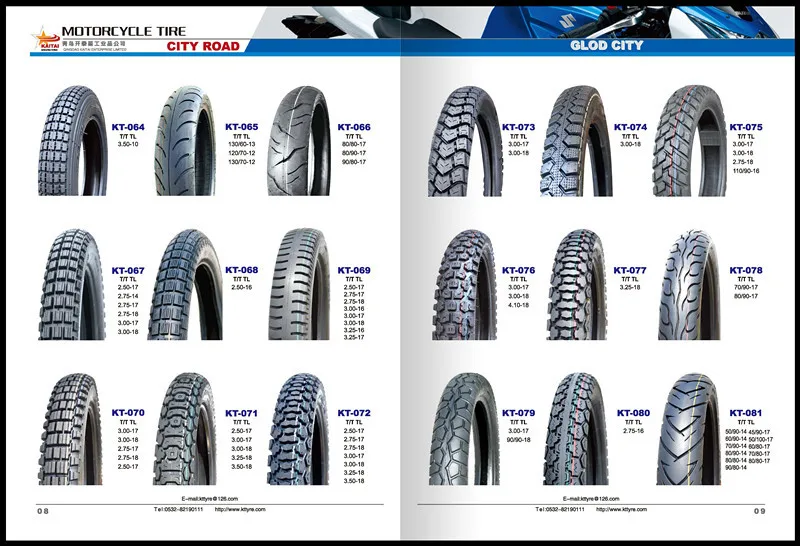
Skip to content
DIY Tech & How-To / May 7, 2018 December 20, 2022
Brittney and her pup, Shawty (“Shorty” with a southern twang), tackle DIY motorcycle maintenance in their own garage together.
In WRN's do it yourself (DIY) section, we cover simple, affordable check-ups you can easily perform yourself that will keep your motorcycle safe and running well. You can find your bike’s service intervals and important bike-specific information in what we like to call M.O.M. That's your motorcycle owner’s manual. M.O.M. always has the answer!
In this article we will cover one of the most important parts of your bike—tires. Your motorcycle tires are the only things that make contact with the road when you’re riding, so it’s important to take good care of them.
Punctures can be present without a leak and are hard to notice without a good inspection.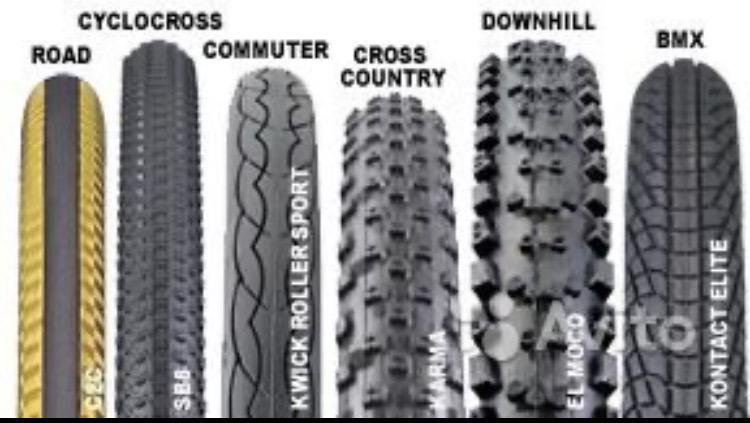
Check your motorcycle’s tire pressure often, at least once a week, but better yet before every ride, even if you ride every day. If there is a significant change in air temperature overnight or between rides, there’s a good chance your tire pressure may have changed too.
Check the motorcycle tire pressure if you add a load or change elevation significantly and will be riding at the new elevation for more than an hour. For example, the difference between sea level and Big Bear Lake, California, is almost 8,000 feet and can be ridden in three hours.
Information on specs for motorcycle tire pressure will come from M.O.M. It might even be on a sticker on your bike's swingarm or frame.
Keep an eye on your tread wear as well, always making sure it has not yet worn down to the level of the wear bar (arrow). If the wear bar is level with the tire’s surface, it is time to replace it.
If you are unable to find a wear bar on your tire, you can measure the tread depth with a tread depth gauge or a simple ruler (if it fits).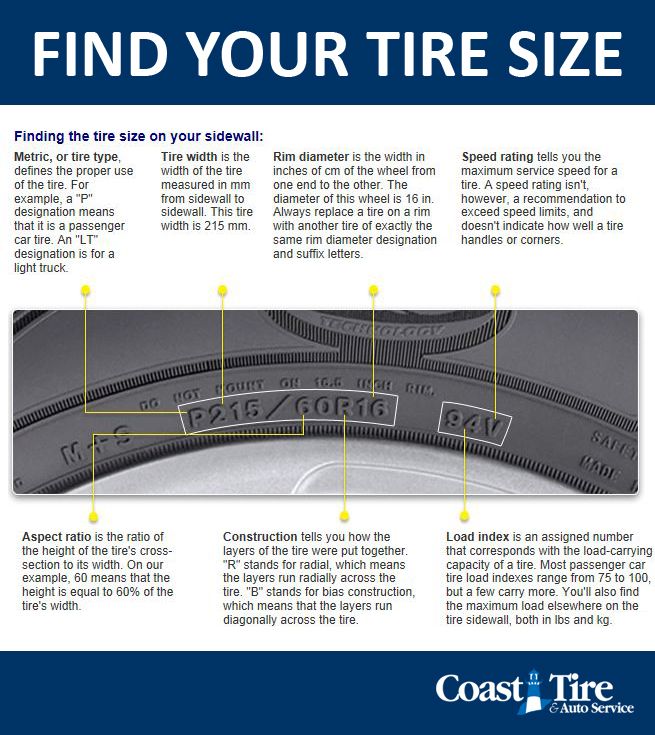
If you find an offending object that is embedded in place, if the tire is not losing air, cautiously ride to the nearest shop for inspection. Whether it is leaking or not, you may be able to get professional help to remove the object and repair the puncture on site. You may also be able to apply a tire patch to get you to the shop without leaving you stranded.
You can check if the puncture is causing a leak by spraying a small coating of Windex or soapy water (or saliva in a pinch) over the object or puncture wound and watch for bubbles. If there are no bubbles it is holding air.
If your bike’s tire pressure is high or low, simply release or fill with air until it is at the recommended pressure. It is normal for tire pressures to vary due to heat, elevation, and weather changes. So check often and maintain accordingly.
This portable MotoPump Mini Pro inflator gets power right from your motorcycle’s battery, and has a built-in LED light and backlit air pressure gauge which makes it easy to inflate tires on the go.
90-degree valve stems like this one allows for easy access when checking tire pressure and adding air. If your motorcycle doesn’t have one, they can be installed the next time you have the tires changed.
The general rule of thumb for tread wear is that anything less than 3/32” or approximately 2mm means it’s time to replace your tire.
This tire passes the top of Lincoln's head, passing the test.
Keep an eye on the age of the tires. Every DOT tire has an age stamp on the sidewall, indicating the week and year of manufacture.
This number represents the week and year of manufacture. This tire came to life on the sixth week (February) of 2016. Fun fact: the date stamp is always on the left side of the front tire and the right side of the rear.
A guaranteed safe age is less than two years for sport tires and less than three years for touring or cruising tires. This will change significantly between manufacturers and how you treat and store your bike. So use this information as a basic guide.
So use this information as a basic guide.
If your tire is beyond its age limit and you’ve confirmed this with the manufacturer, replace it. You never know what the inside of the tire looks like and dry rot can be an invisible danger.
If you find that you only need to replace one tire, you need to replace it with the same make and model of the tire. Tire tread patterns are engineered to work together, and mixing two different tread patterns and compounds can cause a dangerous situation. And please, for the love of riding, always select a motorcycle-specific tire!
Do not get overwhelmed by the overly-complicated size, load rating, speed rating, and compound explanations you might find on many online tire guides. What you really need to know can be explained in a few simple steps.
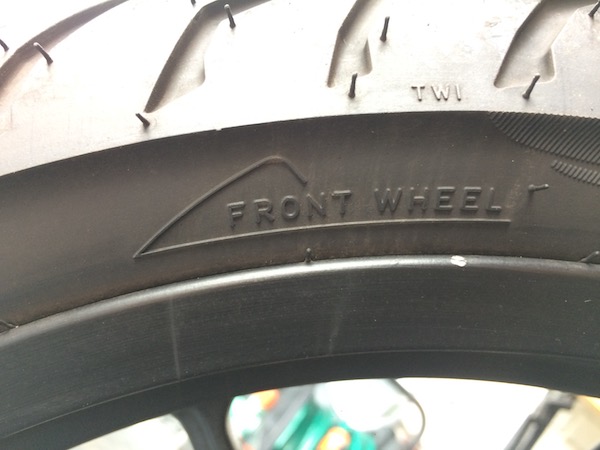
Many original equipment (OE) motorcycle tires were designed to work best on that very bike. So if you don’t know what tire to choose when it’s time to replace them, you can always stick with the OE tire.
Many shops or dealerships will charge extra (or won’t install them at all) if you buy the tires elsewhere and bring them in to be mounted. Don’t deny your local shop the opportunity to earn your business: shop for your tires there.
Don’t deny your local shop the opportunity to earn your business: shop for your tires there.
Falling prey to price: Online deals can seem too-good-to-be-true and are hard to pass up. Keep in mind, tire bargains from a warehouse could indicate a batch of old tires that they want to get rid of.
Longevity: meant to last as long as possible, usually requires a hard compound that heats up slower and doesn’t “melt” or wear down as quickly. Great for touring and cross-country riding.
Aggressive Profile: meant to maximize traction at excessive lean angles. Great for racing.
Multi-Surface: meant for riding both on and off the street with a ratio represented in percentages. For example, 70% street, 30% dirt. Great for exploring the wild outdoors.
Multi-Compound: meant to combine longevity (commuting or touring) and traction (curvy roads) by making the tire from rubber that is harder in the center and softer on the edges.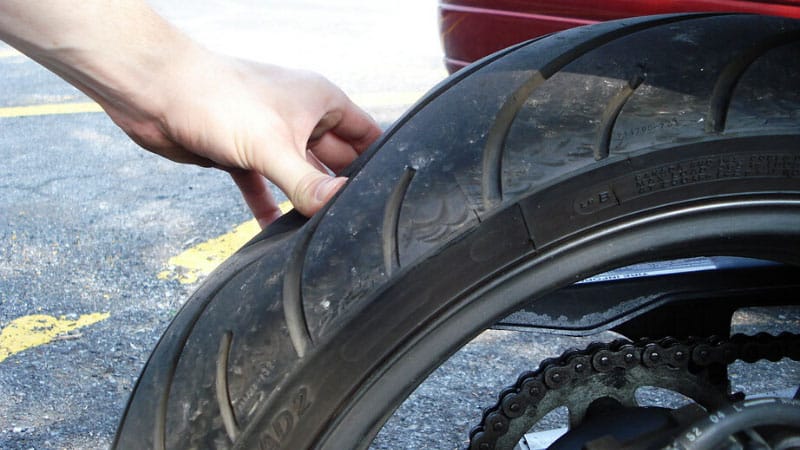 This means certain parts of the tire heat up faster/slower and have more/less traction and flex. Great for riders who commute every day and hit the twisties on their days off.
This means certain parts of the tire heat up faster/slower and have more/less traction and flex. Great for riders who commute every day and hit the twisties on their days off.
Like the saying goes, keep the rubber side down!
Sign Up Now
It's no secret that motor rubber is considered a consumable. Quite expensive, it must be said. We all remember from traffic rules tickets that motorcycle rubber wear is considered acceptable up to 0.8mm. But not to run with a ruler around the motorcycle every morning? Moreover, rubber wear is different, because not only a worn tread is the reason for replacing motor rubber.
Quite expensive, it must be said. We all remember from traffic rules tickets that motorcycle rubber wear is considered acceptable up to 0.8mm. But not to run with a ruler around the motorcycle every morning? Moreover, rubber wear is different, because not only a worn tread is the reason for replacing motor rubber.
Consider the reasons for changing tires:
The first and main reason rubber is scrapped. Tire tread wear is determined visually by indicator pointers. On the tire, if you carefully inspect it, there are special marks inside the tread pattern. These tubercles are not a manufacturing defect, but that little thing that tells you that it is dangerous to use rubber further. When the tread pattern is even with the bump, you should buy a fresh tire. It's simple, you don't even need a ruler.
In fact, a tire wears out the fastest at two points in its life - during break-in and after tread wear.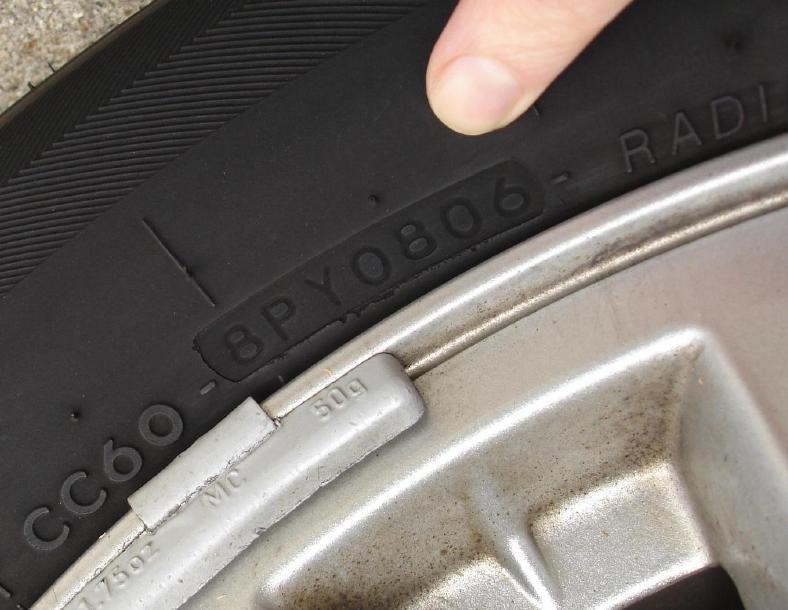 The smaller the pattern on the rubber, the faster it will become unusable, it is worse to keep the road and slide in every possible way on a wet surface. Just in case you think the rubber wears evenly and after the 0.8 mm critical point you still want to ride, I'll disappoint you, because after this point the rubber will begin to wear off at an amazing deserter speed.
The smaller the pattern on the rubber, the faster it will become unusable, it is worse to keep the road and slide in every possible way on a wet surface. Just in case you think the rubber wears evenly and after the 0.8 mm critical point you still want to ride, I'll disappoint you, because after this point the rubber will begin to wear off at an amazing deserter speed.
Cold tires wear out more slowly than warm tires. By the way, tires with lower pressure warm up faster, and therefore wear out more intensively. Low pressure affects wear at the edges of the tire, and high pressure contributes to abrasion in the center.
What did you think, bought a rubber, put it on and it will always be like new? Alas, nothing lasts forever under the moon, and even rubber is treacherously aging. The first signs that it is time for rubber to retire are cracks. Large or small, depends on storage conditions and how sad the tire is with life.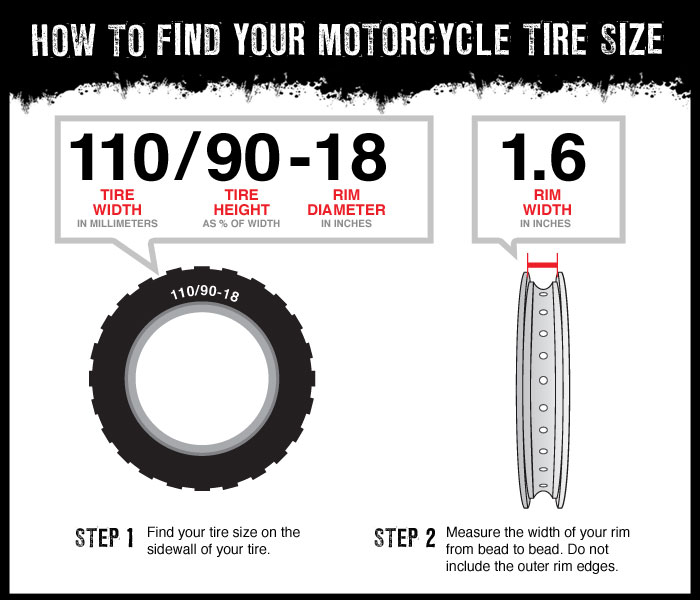 Additional signs of the age of rubber - the color turns from black to gray, loss of elasticity, hardening and roughness of the surface.
Additional signs of the age of rubber - the color turns from black to gray, loss of elasticity, hardening and roughness of the surface.
It is logical that mechanical damage includes everything that has affected the rubber from the outside, the vast majority are impacts and punctures. Riding habits, bad landings, even the influence of suspension settings can damage the integrity of the tire.
The combustion of rubber and spools should be considered as a separate point here. Since not every tire is used in light modes. Have you been to race tracks or demonstrations? If so, then you're familiar with the smell of burnt rubber, especially if you've watched someone drift. By spools, collected rubber in different parts of the tire, you can determine how the driver drove, especially true for track riders.
All damage that the rubber receives during storage, as well as in the process of uneven loading, is placed here. It happens that bulges appear on the tire, a sure sign that it's time to rest.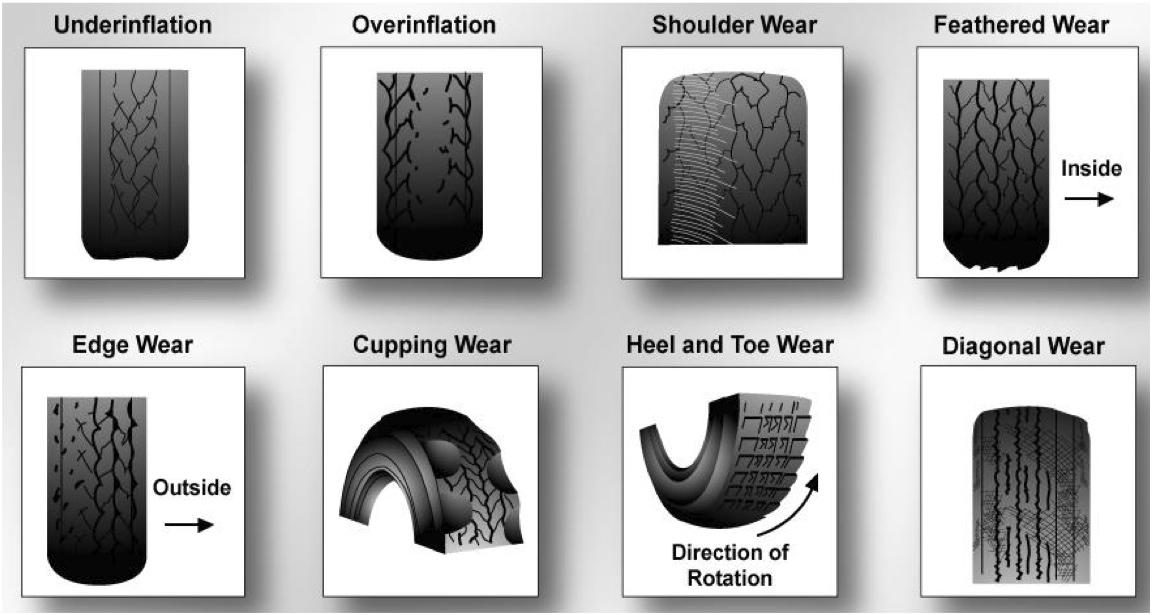 Any deformation of the tire inevitably leads to a change in the distribution of force and to a shift in the contact patch, so such rubber will have to be changed to fresh.
Any deformation of the tire inevitably leads to a change in the distribution of force and to a shift in the contact patch, so such rubber will have to be changed to fresh.
Tire wear is often the result of too much speed at which we move. However, there are many more factors influencing this process. Tire condition is largely responsible for safety, which is why it is so important to pay special attention to all, even the smallest alarm signals. If you want to know what causes it to work prematurely, as well as what are the most common causes of mechanical damage, be sure to read our article.
At the very beginning, it is worth noting that motorcycle tires are less wear resistant than car tires, so we will do much less mileage on one set. The service life of this type of tire is estimated at approximately to 15,000 km . It happens, however, that after driving only a few thousand kilometers, you can see uneven wear on motorcycle tires.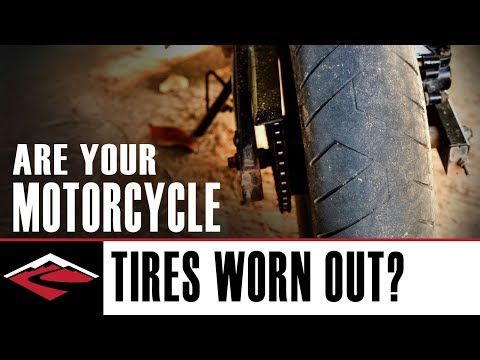 This phenomenon also occurs in a car with efficient running gear. This also happens to motorcycle owners who do not systematically check their tire pressure. Therefore, remember - regularly monitor the condition of the tires, because even the slightest damage to it can lead to a motorcycle tipping over and, as a result, to dangerous consequences.
This phenomenon also occurs in a car with efficient running gear. This also happens to motorcycle owners who do not systematically check their tire pressure. Therefore, remember - regularly monitor the condition of the tires, because even the slightest damage to it can lead to a motorcycle tipping over and, as a result, to dangerous consequences.
Motorcycle tire wear is a problem that affects both motorcycle and scooter owners. Dynamic driving as well as hard acceleration and braking can lead to faster tread wear. Tire manufacturers recommend lowering the average speed at which we drive, from 120 to 100 km/h . This practice increases the life of the rubber by an average of 30% .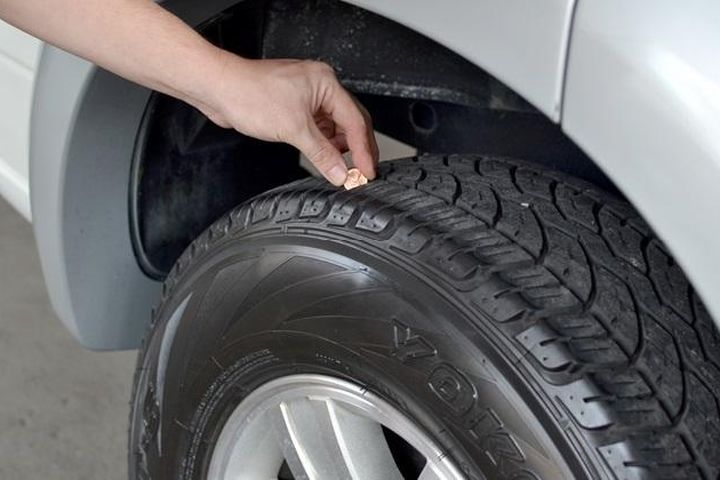 The year of manufacture and storage conditions also affect the wear of motorcycle tires. It is important to store them indoors, preferably in a garage or basement, away from direct sunlight. Rubber is very sensitive, so their constant exposure would not be a good idea. It is also important not to leave motorcycle tires outside due to low temperatures, especially in the autumn-winter season. Properly stored tires will last you even 5-6 seasons. Therefore, it is worth taking care of a suitable storage place.
The year of manufacture and storage conditions also affect the wear of motorcycle tires. It is important to store them indoors, preferably in a garage or basement, away from direct sunlight. Rubber is very sensitive, so their constant exposure would not be a good idea. It is also important not to leave motorcycle tires outside due to low temperatures, especially in the autumn-winter season. Properly stored tires will last you even 5-6 seasons. Therefore, it is worth taking care of a suitable storage place.
Driving style and skill are other factors that contribute to premature wear of motorcycle tires. It may happen that the tread is heavily worn on one side, and on the other, its depth is still within the limits. It is also worth bearing in mind the type of surface on which we are driving. This is usually not a big deal, but remember that when riding especially on gravel roads, tire wear will be 30% more than when driving on asphalt.
Depending on the type of motorcycle we have and how and how often it is used, motorcycle tire wear can vary.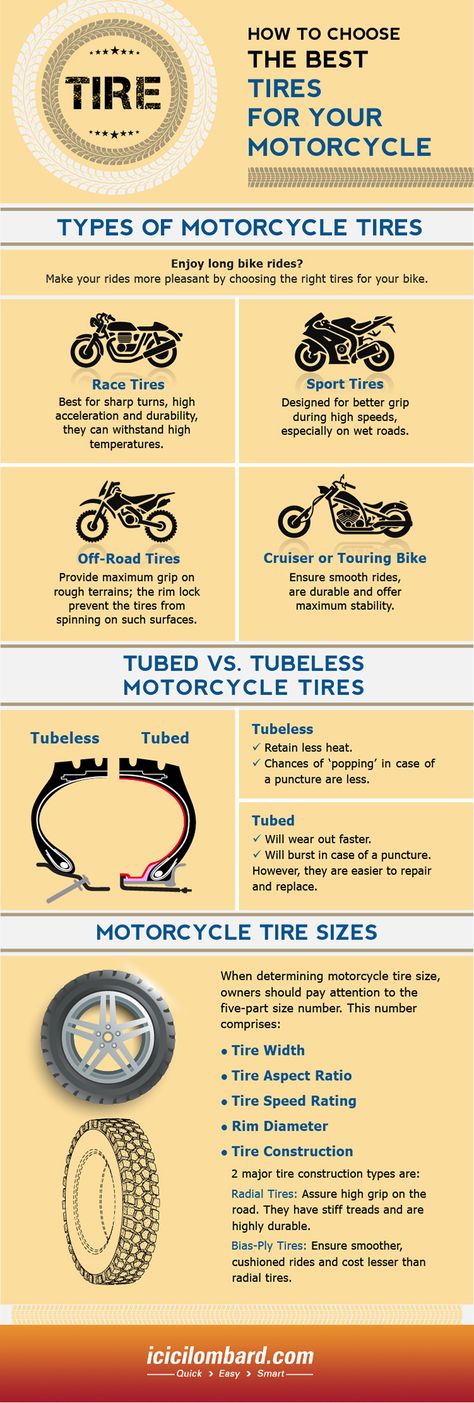 Therefore, when evaluating the condition of tires, always consider those parts that have the most wear. It is worth knowing that in most cases, the degree of wear in the middle is greater than on the sides of the tire.
Therefore, when evaluating the condition of tires, always consider those parts that have the most wear. It is worth knowing that in most cases, the degree of wear in the middle is greater than on the sides of the tire.
The minimum tread depth is 1.6 mm. However, it is recommended to change the tires when the tire level drops to 2 millimeters . The value (1.6 mm) is marked on the tire with the so-called TWI points, i.e. small crossbars, clearly visible in the individual grooves of the tread. A little more difficult for owners of models that do not have too many cutouts in the central part of the tread. Then the wear of motorcycle tires is much more difficult to determine, and the TWI points themselves should be looked for on the sides. In both cases, when the surface of the motorcycle tire is equal to the TWI point, the owner is obliged to replace the tires with new ones.
| What does the snowflake on the tire mean? The snowflake on a tire (3PMSF marking) is a special marking for models that have been tested on snow and are able to meet the minimum requirements for driving safety on. 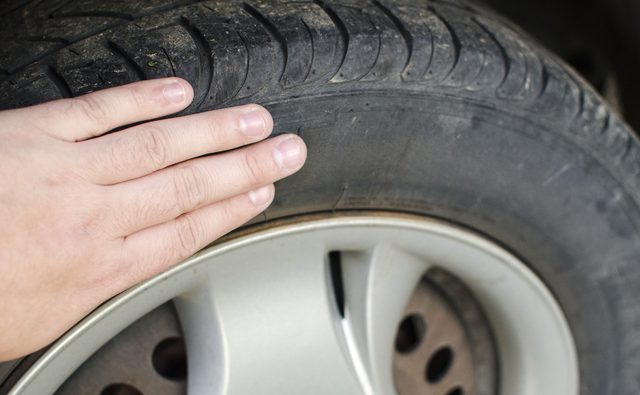 |